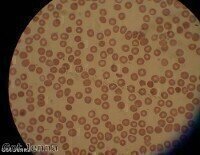Bioanalytical
Chinese herbal medicine may be used as malaria treatment
Dec 24 2012
A Chinese herbal medicine could be used as treatment for Malaria, after work by scientists at the Scripps Research Institute investigated its properties.
Chang Sham has been used for thousands of years to treat fevers connected with malaria, and its benefits have now been uncovered thanks to a high-resolution structure solved by specialists at Scripps Research Institute.
As revealed in the journal Nature, the structure displays in atomic detail how a two-headed compound derived from the active ingredient in Chang Shan functions.
Before the work, experts were aware of the halofuginone compound's ability to suppress parts of the immune system, but nobody knew exactly how this was accomplished.
It has been found that the new structure operates like a wrench in the works, with halofuginone jamming the metaphorical gears of a molecular machine that carries out "aminocylation", a biological process that enables organisms to synthesize the proteins they require to live.
Professionals believe Chang Shan could help with malarial fevers because traces of a halofuginone-like chemical in the herb interfere with this same process in malaria parasites, destroying them in the bloodstream of infected people.
Halofuginone has been used in clinical trials for cancer, though the high-resolution picture of the molecule indicates it possesses a modularity that would make it useful with regard to the creation of new pharma drugs for other diseases.
Paul Schimmel, PhD, chair of Molecular Biology and Chemistry and member of The Skaggs Institute for Chemical Biology at TSRI, said "Our new results solved a mystery that has puzzled people about the mechanism of action of a medicine that has been used to treat fever from a malaria infection going back probably 2,000 years or more.
"This is a remarkable example where a substrate of an enzyme (ATP) captures an inhibitor of the same enzyme, so that you have an enzyme-substrate-inhibitor complex."
This work comes after the Florida campus of the Scripps Research Institute developed technology to change the function of RNA in living cells.
The team created a new approach to design molecules which recognise and disable RNA targets.
Posted by Fiona Griffiths
Digital Edition
Chromatography Today - Buyers' Guide 2022
October 2023
In This Edition Modern & Practical Applications - Accelerating ADC Development with Mass Spectrometry - Implementing High-Resolution Ion Mobility into Peptide Mapping Workflows Chromatogr...
View all digital editions
Events
May 05 2024 Seville, Spain
May 15 2024 Birmingham, UK
May 19 2024 Brno, Czech Republic
May 21 2024 Lagos, Nigeria
May 23 2024 Beijing, China














